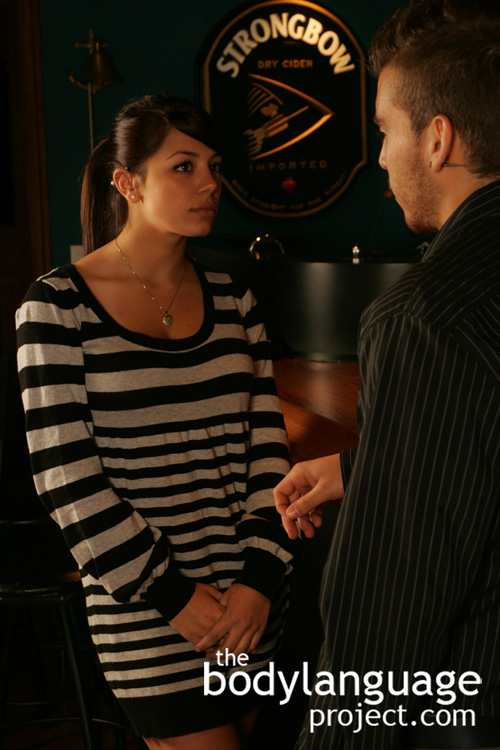In this chapter we covered defensive and aggressive body language. We found that double arm hug or arm crossing, partial arm crossing, arm gripping, fists and arm clenching, stiff or curved arms, or even cufflinks can be used to signal defensiveness. We learned that objects are used to shield the insecure by affording fewer angles of attack which is the case when we lean against a wall or bar top, hold a drink near our face or against our chest, or hide behind a podium whilst presenting. We discovered that headphones can be great tools for women who don’t want to be bothered, how pens, books, or newspapers indicate division between people and how conversations can be ended or avoided simply by raising a book. We found that other cues such as head bows, looking up to the side or through the forehead, avoiding eye contact, seeking escape routes with darting eyes, or reduce body size among others, show defensiveness.
On the other hand, we cut through defensiveness to study aggression which can include the in-your-face posture characterized by the hands on hips, feet together at attention, leaning forward with the head and chin up or out and exposed. We also saw that an aggressive person might get red in the face, cross or drop their arms to the side and clench their fists, finger point, become tense overall, clamp their jaw, tighten their lips, frown and lower their eyebrows. We learned that a stare lasting ten seconds or longer invokes anxiety and discomfort in subordinates in the ‘unblinking eyes’, and that overstepping boundaries can lead to conflict.

